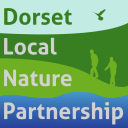Celebrating the Heath Tiger Beetle
Sophie Burry, Dorset LNP Assistant The heath tiger beetle (Cicindela sylvatica) is a species that is often overlooked in Dorset. Often because they are incredibly tricky to spot in the wild (as well as being incredibly rare, they are also very agile hunters!) but also because they can be overshadowed by their “more attractive” relative …

